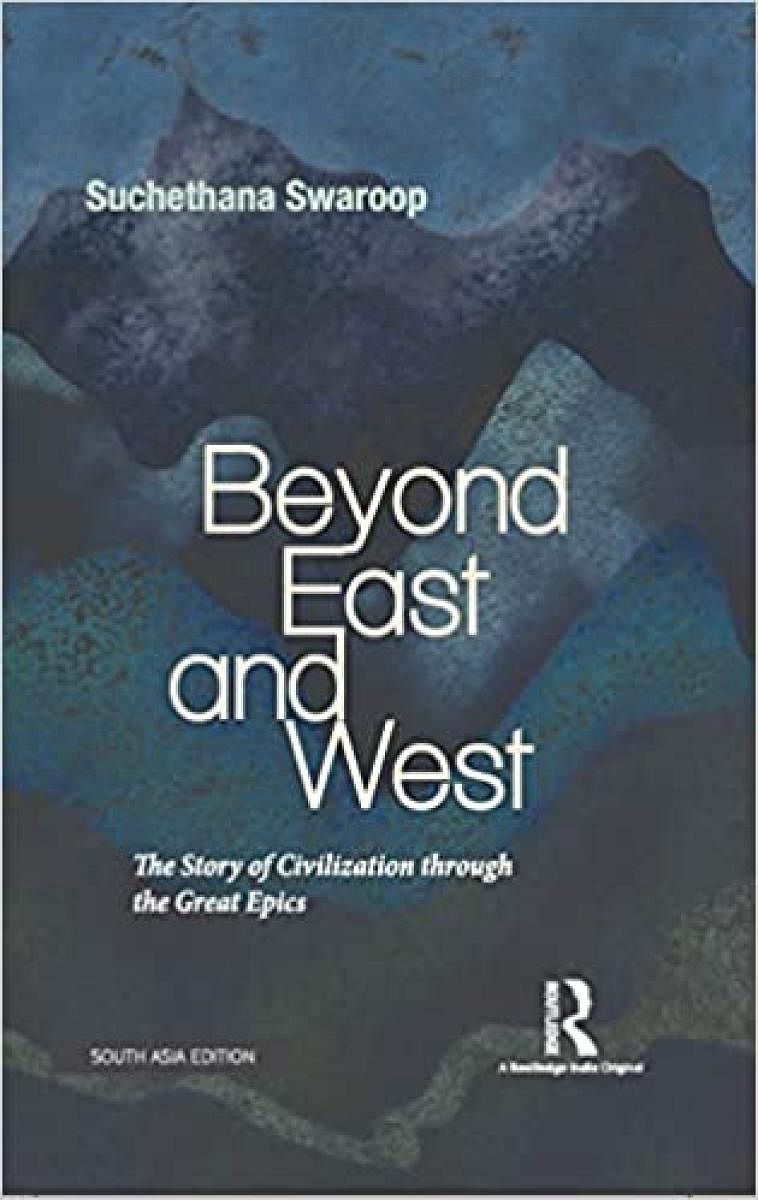
Suchethana Swaroop’s Beyond East and West, is perhaps the first non-fictional Kannada work to be translated into English and brought out as an international edition. It is a bold literary exercise of dazzling vision that manages to ferret out the underlying similarities among the great epics of Greek, Sanskrit and Latin. Fascinating elements in the epics, unravelled by the author, provide insights into the history of the present.
At the outset, the book traces the genealogy of the present situation back into the epic context. An interesting hypothesis is the postulation of Mahabharata to a period anterior to Valmiki’s Ramayana and Homer’s Iliad. As done by several others, the author divides Mahabharata into the original composition and subsequent additions with its lag of centuries. Similarly, it presumes two Ramayanas — one that concludes with the reunion of Sita and Rama; and the other which deals with Sita’s life in the forest and her final exit from the earth. The author believes the Indian attitude of indifference to tradition is the reason for the disfiguring of original texts with many taking it upon themselves to re-write them and make additions/deletions as they please.
On the contrary, Europe never ever took to re-write Homer, in full recognition of the fundamental difference between original writing and translation, the author argues. According to him, it was not accidental that the later European languages went on growing as natural successors of Greek and Latin, adapting to the changes taking place. He discerns it was continuity, despite ups and downs, in the intellectual tradition of the West that gave the world not only Homer, Sophocles, Pythagoras and Aristotle, but also Dante, Newton, Hawking and many more.
Reading culture
Is it because of the reading culture prevalent in Europe? With this hunch in mind, Swaroop asks whether the language and various other problems still persisting in India has anything to do with her reading culture. He grapples with several such atemporal questions in his densely written book. Swaroop maintains that linguistic attempts to adapt, except in the field of mass communication, have remained mere experiments.
A comparative analysis of the epic characters forms the most beautiful part of this book. Swaroop observes, if Aeneas in Virgil is the ideal character of European tradition, Rama is his counterpart in the Indian tradition. Aeneas goes in search of suitable land to build an empire, which is free from racial and other strife. Rama goes in search of his stolen wife and locates her with the support of Hanuman and his vanara contingent. In Mahabharata, Krishna shows the path for Arjuna to tread, while in Virgil, Aeneas follows his own path of knowledge and experience. Swaroop identifies Aeneas as the true Karma Yogi, a concept celebrated as India’s contribution to world cultural heritage.
N S Raghavan deserves credit for his eminently readable translation.